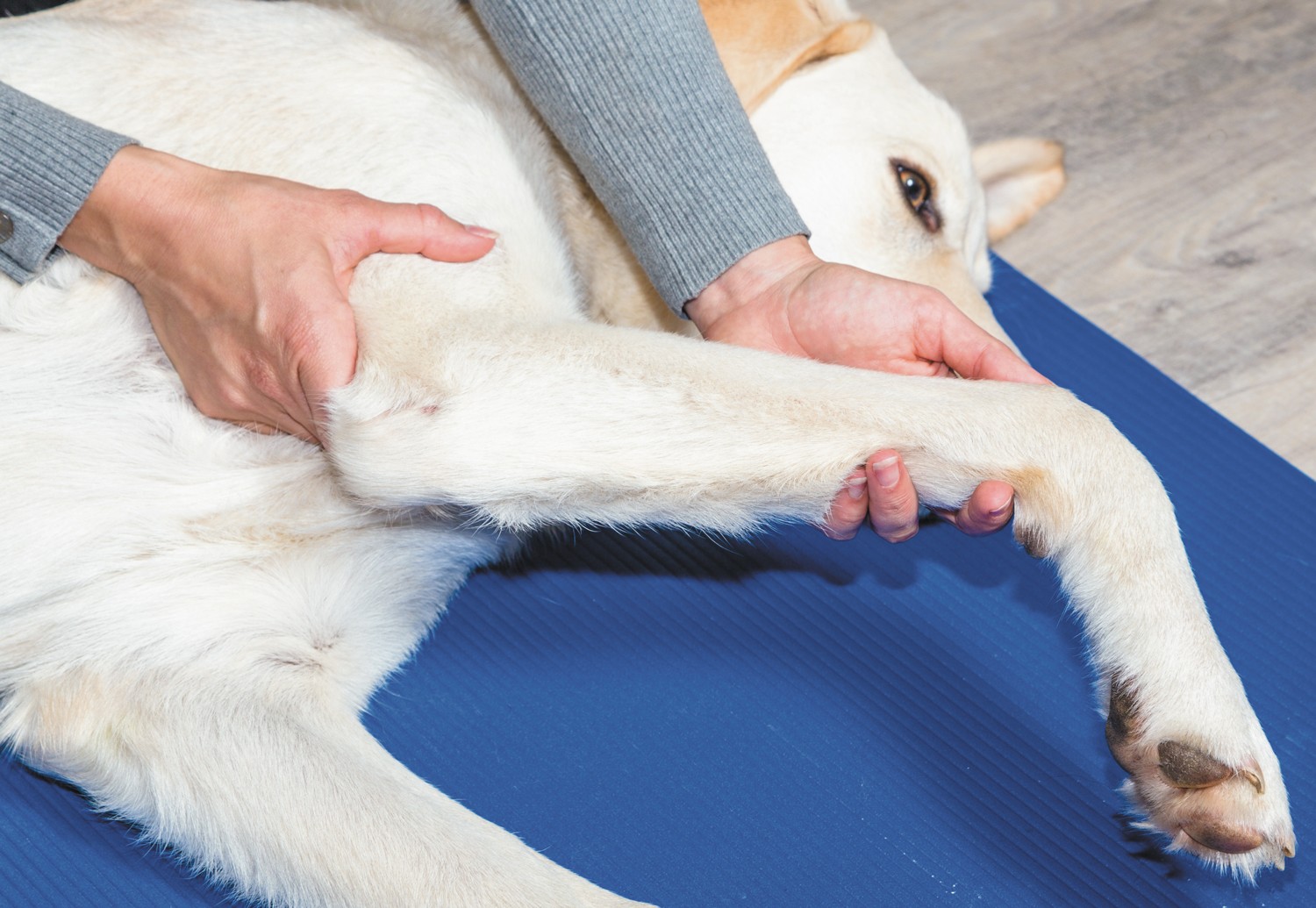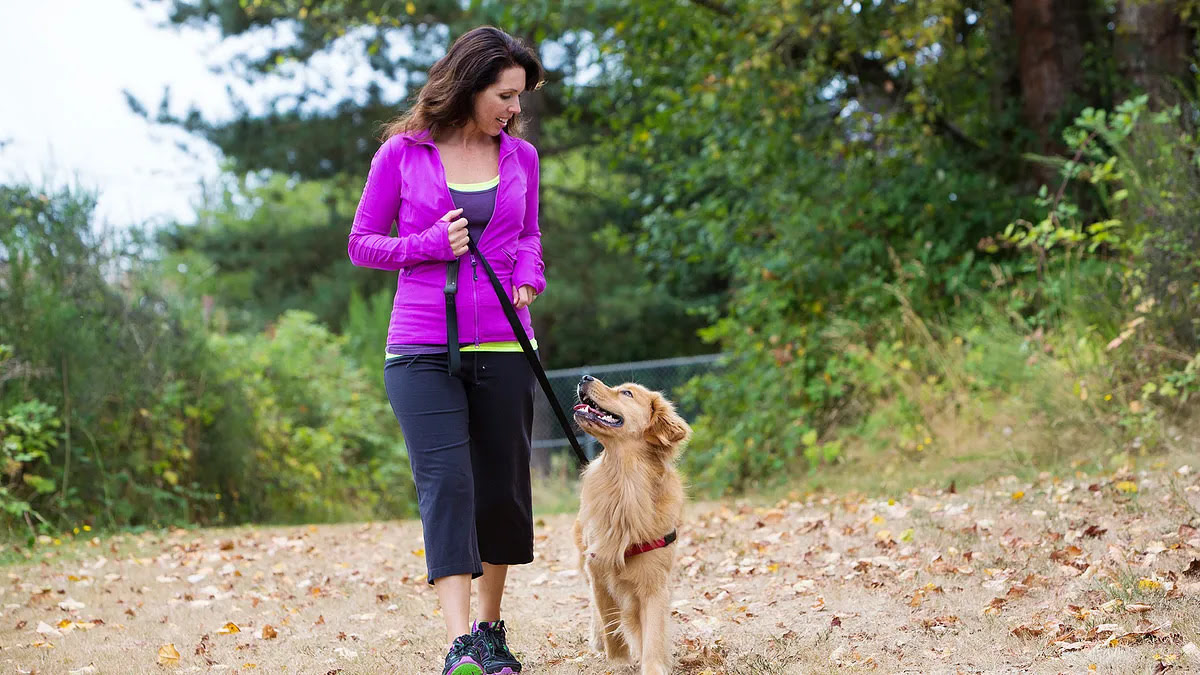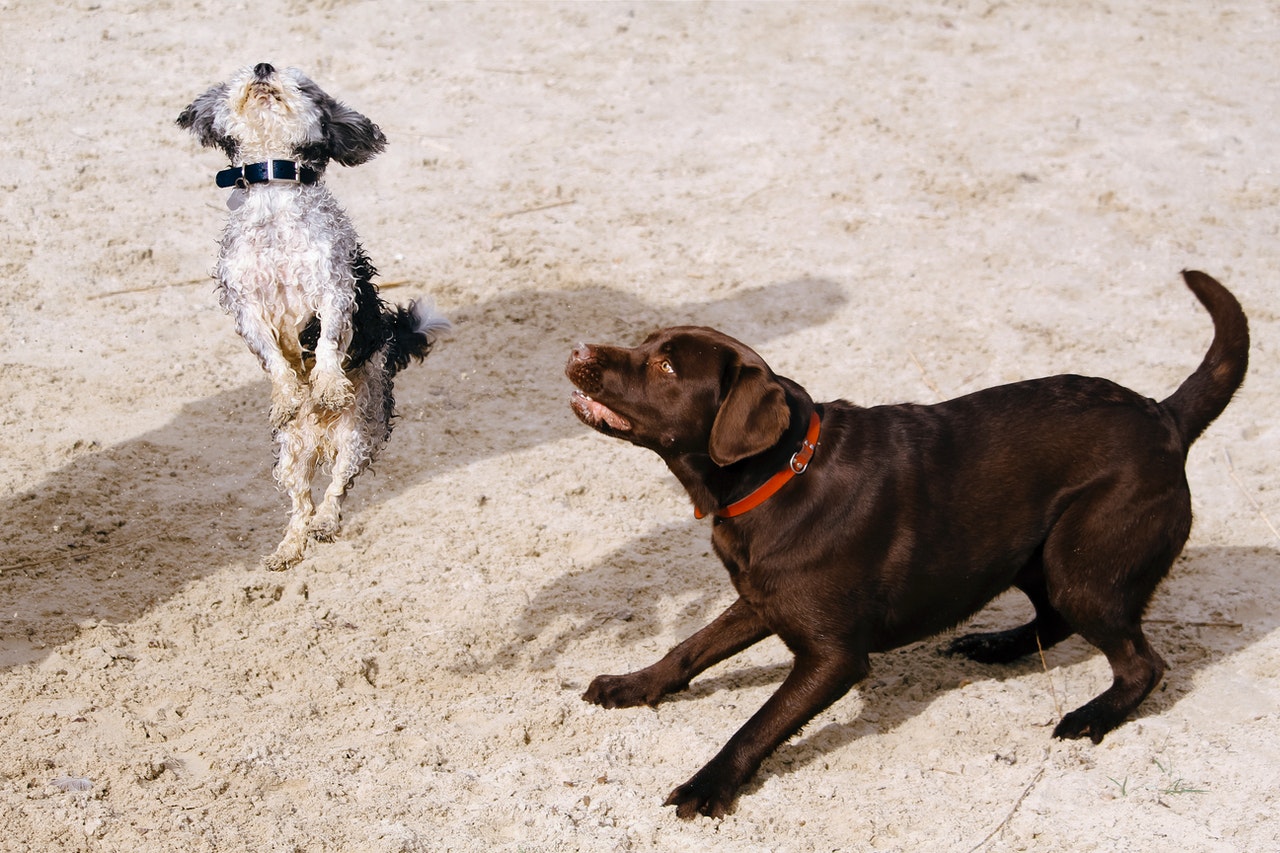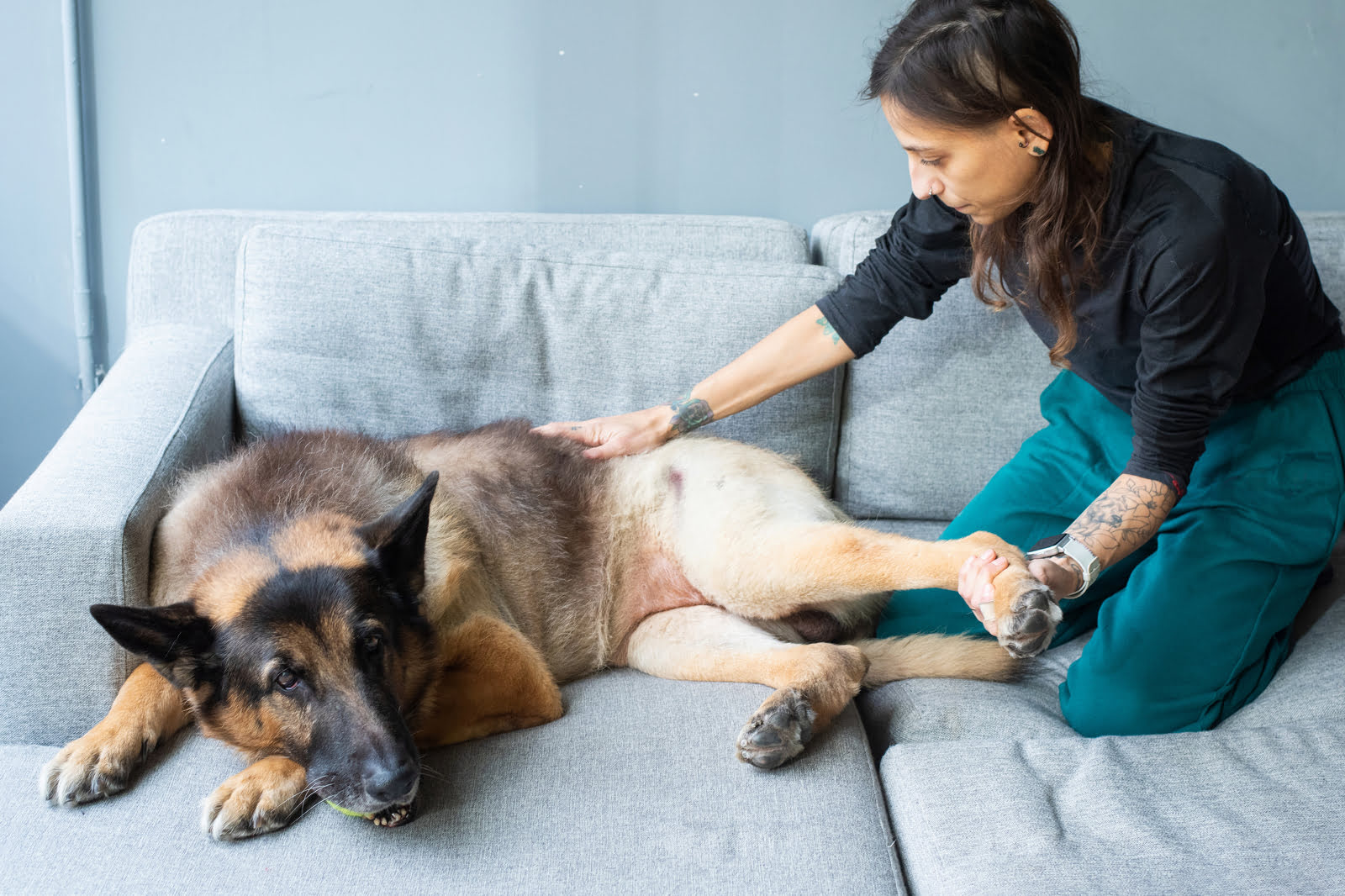Home>Health & Wellness>Common Health Issues>Muscular and Joint Health>How To Tell If A Dog Has Rheumatoid Arthritis


Muscular and Joint Health
How To Tell If A Dog Has Rheumatoid Arthritis
Modified: February 21, 2024
Learn how to recognize the signs of rheumatoid arthritis in dogs and support their muscular and joint health. Discover effective strategies for managing their condition.
(Many of the links in this article redirect to a specific reviewed product. Your purchase of these products through affiliate links helps to generate commission for Pawsomeoldies.com, at no extra cost. Learn more)
Table of Contents
Introduction
Rheumatoid arthritis is a chronic and debilitating condition that affects not only humans but also our beloved canine companions. This autoimmune disease causes inflammation in the joints, leading to pain, stiffness, and reduced mobility. While it is more commonly associated with humans, dogs can also suffer from rheumatoid arthritis, impacting their overall quality of life.
As responsible pet owners, it is crucial to be aware of the signs and symptoms of rheumatoid arthritis in dogs, as early detection and intervention can significantly improve their prognosis and well-being. By understanding the nature of this condition and its effects on our furry friends, we can take proactive measures to support them and provide the care they need to live comfortably.
In the following sections, we will delve into the intricacies of rheumatoid arthritis in dogs, exploring the signs and symptoms, diagnostic methods, treatment options, and practical tips for managing this condition. By gaining a comprehensive understanding of rheumatoid arthritis in dogs, we can equip ourselves with the knowledge and resources to ensure the best possible outcomes for our canine companions.
Read more: How To Tell If Your Senior Dog Has Tumors
Understanding Rheumatoid Arthritis in Dogs
Rheumatoid arthritis in dogs is a complex and often misunderstood condition that can have a profound impact on their overall well-being. Similar to humans, dogs can develop this chronic autoimmune disease, which primarily affects the joints, causing inflammation, pain, and stiffness. While the exact cause of rheumatoid arthritis in dogs remains elusive, it is believed to involve a combination of genetic predisposition, environmental factors, and an overactive immune response.
In rheumatoid arthritis, the immune system mistakenly attacks the body's own tissues, particularly the synovial membrane that lines the joints. This relentless assault triggers an inflammatory cascade, leading to the destruction of cartilage and bone within the affected joints. Over time, this process can result in joint deformities, impaired mobility, and a diminished quality of life for dogs.
One of the distinguishing features of rheumatoid arthritis in dogs is its symmetrical nature, meaning that it typically affects the same joints on both sides of the body. This symmetry sets it apart from other forms of arthritis and can aid in its diagnosis. Commonly affected joints include the wrists, elbows, knees, and ankles, although rheumatoid arthritis can potentially impact any joint in the body.
The onset of rheumatoid arthritis in dogs is often insidious, with subtle signs that may initially go unnoticed. As the condition progresses, however, pet owners may observe changes in their dog's gait, reluctance to engage in physical activities, and visible discomfort when moving or being handled. Additionally, dogs with rheumatoid arthritis may exhibit signs of fatigue, irritability, and a reluctance to be touched or petted, reflecting their underlying pain and discomfort.
Understanding the intricacies of rheumatoid arthritis in dogs is essential for recognizing the early warning signs and seeking timely veterinary care. By gaining insight into the underlying mechanisms of this condition and its impact on dogs, pet owners can take proactive steps to support their furry companions and provide them with the necessary care and attention to manage rheumatoid arthritis effectively.
Signs and Symptoms of Rheumatoid Arthritis in Dogs
Rheumatoid arthritis in dogs manifests through a range of signs and symptoms that can gradually become apparent as the condition progresses. While dogs are adept at masking their discomfort, attentive pet owners can observe subtle changes in their behavior and physical abilities, providing valuable clues that may indicate the presence of rheumatoid arthritis.
-
Limping and Altered Gait: Dogs with rheumatoid arthritis may exhibit a noticeable limp or an altered gait, characterized by stiffness and reluctance to put weight on affected limbs. This can be particularly evident after periods of rest or inactivity, as the joints become stiff and painful upon movement.
-
Reduced Activity and Exercise Intolerance: A once active and energetic dog may display a reluctance to engage in physical activities such as running, jumping, or playing. This reduced activity level can be attributed to joint pain and stiffness, causing discomfort during movement.
-
Stiffness and Difficulty Rising: Dogs with rheumatoid arthritis may experience stiffness, especially after prolonged periods of rest. They may struggle to rise from a lying or sitting position, often accompanied by visible discomfort and reluctance to engage in normal activities.
-
Behavioral Changes: Dogs in pain may exhibit changes in behavior, such as increased irritability, restlessness, or a preference for solitude. They may also display signs of depression or anxiety, reflecting their discomfort and diminished quality of life.
-
Joint Swelling and Heat: Affected joints may exhibit swelling, warmth, and tenderness upon palpation. This can be observed as an abnormal enlargement of the joint, often accompanied by heat emanating from the affected area.
-
Reluctance to be Touched: Dogs with rheumatoid arthritis may display a reluctance to be touched or petted, particularly in the regions where joint pain and inflammation are present. This aversion to physical contact is a protective response to avoid exacerbating their discomfort.
-
Licking or Chewing at Joints: In an attempt to alleviate their discomfort, dogs may resort to licking or chewing at the affected joints. This self-soothing behavior can indicate localized pain and inflammation within the joints.
-
Generalized Discomfort and Fatigue: Dogs with rheumatoid arthritis may exhibit signs of generalized discomfort, manifested through lethargy, fatigue, and a reluctance to engage in normal activities. This can be indicative of the overall impact of the condition on their physical and emotional well-being.
By recognizing these signs and symptoms of rheumatoid arthritis in dogs, pet owners can promptly seek veterinary evaluation and intervention, leading to an early diagnosis and the implementation of appropriate management strategies to improve their dog's quality of life.
Diagnosing Rheumatoid Arthritis in Dogs
Diagnosing rheumatoid arthritis in dogs can be a multifaceted process that involves a comprehensive evaluation of clinical signs, physical examination findings, and diagnostic tests. Given the subtle nature of early symptoms and the challenges associated with canine pain assessment, veterinary professionals employ a combination of approaches to accurately diagnose rheumatoid arthritis and differentiate it from other musculoskeletal conditions.
The diagnostic journey often begins with a thorough physical examination, during which the veterinarian assesses the dog's gait, joint mobility, and overall musculoskeletal health. Observing the dog's movement, posture, and response to palpation can provide valuable insights into the presence of joint pain, swelling, and stiffness. Additionally, the veterinarian may inquire about the dog's activity level, behavioral changes, and any observed difficulties in performing routine tasks.
To further elucidate the underlying pathology, imaging studies such as radiography (X-rays) and advanced imaging modalities like ultrasound or magnetic resonance imaging (MRI) may be employed. These imaging techniques allow for the visualization of joint structures, including the presence of joint effusion, cartilage erosion, and bony changes characteristic of rheumatoid arthritis. Moreover, imaging studies can aid in assessing the extent of joint involvement and identifying any concurrent orthopedic abnormalities.
In some cases, joint fluid analysis, known as arthrocentesis, may be performed to evaluate the synovial fluid within affected joints. Analysis of the synovial fluid can reveal the presence of inflammatory markers, such as increased white blood cell count and protein levels, providing valuable diagnostic clues indicative of rheumatoid arthritis. Additionally, the synovial fluid analysis can help rule out infectious or traumatic joint conditions that may mimic the clinical presentation of rheumatoid arthritis.
Furthermore, blood tests, including complete blood count (CBC), serum chemistry, and specific autoantibody assays, may be conducted to assess for systemic inflammation, immune-mediated processes, and the presence of rheumatoid factor or anti-cyclic citrullinated peptide (anti-CCP) antibodies. While these tests may not definitively diagnose rheumatoid arthritis in dogs, they contribute to the overall diagnostic workup by providing supportive evidence of an immune-mediated etiology and systemic inflammatory response.
The culmination of these diagnostic approaches, coupled with a comprehensive clinical assessment, enables veterinarians to establish a definitive diagnosis of rheumatoid arthritis in dogs. By leveraging a combination of physical examination findings, imaging studies, joint fluid analysis, and laboratory tests, veterinary professionals can formulate an accurate diagnosis and initiate tailored management strategies to alleviate the dog's discomfort and improve their overall quality of life.
Treatment Options for Dogs with Rheumatoid Arthritis
The management of rheumatoid arthritis in dogs encompasses a multifaceted approach aimed at alleviating pain, reducing inflammation, preserving joint function, and enhancing the overall quality of life for affected canine companions. While rheumatoid arthritis in dogs is not curable, various treatment modalities can effectively mitigate the clinical manifestations of the condition and provide long-term support for dogs experiencing joint discomfort and mobility limitations.
Medications
Veterinarians may prescribe nonsteroidal anti-inflammatory drugs (NSAIDs) to alleviate pain and reduce inflammation within the affected joints. These medications help alleviate discomfort and improve mobility, enabling dogs to engage in daily activities with greater ease. Additionally, disease-modifying antirheumatic drugs (DMARDs) such as methotrexate or leflunomide may be utilized to modulate the immune response and mitigate the progression of joint damage in rheumatoid arthritis.
Nutraceuticals and Supplements
Supplements such as glucosamine, chondroitin, and omega-3 fatty acids can play a supportive role in managing rheumatoid arthritis in dogs. These nutraceuticals aid in preserving joint health, promoting cartilage integrity, and reducing inflammation, contributing to enhanced joint function and mobility. Moreover, the inclusion of antioxidants and joint-supportive nutrients in the canine diet can further complement the management of rheumatoid arthritis.
Physical Therapy and Rehabilitation
Physical therapy and rehabilitation techniques tailored to the specific needs of dogs with rheumatoid arthritis can be instrumental in maintaining joint flexibility, muscle strength, and overall mobility. Therapeutic exercises, hydrotherapy, and massage therapy can help alleviate stiffness, improve range of motion, and prevent muscle atrophy, thereby enhancing the dog's physical well-being and minimizing the impact of rheumatoid arthritis on their daily activities.
Weight Management and Dietary Modifications
Maintaining an optimal body weight is crucial for dogs with rheumatoid arthritis, as excess weight can exacerbate joint strain and discomfort. Dietary modifications, including portion control and the incorporation of joint-friendly nutrients, can support weight management and reduce the burden on the affected joints. A balanced and nutrient-rich diet tailored to the dog's specific needs can contribute to overall health and well-being.
Read more: How To Tell If Your Dog Has Dental Problems
Environmental Adaptations
Modifying the dog's living environment to accommodate their mobility limitations and provide comfort is essential. This may involve the use of orthopedic beds, ramps or steps to facilitate access to elevated surfaces, and minimizing environmental hazards that could pose challenges to dogs with rheumatoid arthritis. Creating a supportive and accessible living space can enhance the dog's comfort and promote independent movement.
Surgical Interventions
In severe cases of rheumatoid arthritis where joint damage is extensive and debilitating, surgical interventions such as joint arthroplasty or joint fusion may be considered to alleviate pain and restore joint function. These procedures are aimed at addressing advanced joint pathology and improving the dog's overall comfort and mobility.
By integrating these treatment options and tailoring them to the individual needs of dogs with rheumatoid arthritis, pet owners and veterinary professionals can collaborate to optimize the management of this chronic condition. Through a comprehensive and holistic approach encompassing medication, supportive care, and lifestyle modifications, dogs with rheumatoid arthritis can experience enhanced comfort, improved mobility, and a higher quality of life.
Tips for Managing Rheumatoid Arthritis in Dogs
Managing rheumatoid arthritis in dogs requires a proactive and compassionate approach to ensure the well-being and comfort of our canine companions. By implementing practical strategies and making thoughtful adjustments to their daily routine and environment, pet owners can significantly enhance the quality of life for dogs living with rheumatoid arthritis.
Provide Comfortable Resting Areas
Creating comfortable and supportive resting areas for dogs with rheumatoid arthritis is essential. Orthopedic beds or soft, padded surfaces can alleviate pressure on their joints and provide a cozy space for rest and relaxation. Additionally, ensuring that these resting areas are easily accessible and located in warm, draft-free environments can further enhance their comfort.
Gentle Exercise and Physical Activity
While it's important to encourage gentle exercise and physical activity for dogs with rheumatoid arthritis, it's equally crucial to avoid activities that place excessive strain on their joints. Low-impact exercises such as short, leisurely walks and controlled indoor play sessions can help maintain joint flexibility and muscle strength without exacerbating discomfort.
Environmental Modifications
Adapting the dog's living environment to accommodate their mobility limitations is paramount. This may involve providing ramps or steps to facilitate access to elevated surfaces, minimizing slippery floor surfaces, and ensuring that food and water bowls are easily reachable. Creating a safe and supportive environment can empower dogs with rheumatoid arthritis to navigate their surroundings with greater ease.
Weight Management
Maintaining an optimal body weight is crucial for dogs with rheumatoid arthritis, as excess weight can exacerbate joint strain and discomfort. Working with a veterinarian to develop a tailored nutrition and weight management plan can help ensure that the dog maintains a healthy weight, reducing the burden on their joints and supporting overall well-being.
Regular Veterinary Monitoring
Regular veterinary check-ups and monitoring are essential for dogs with rheumatoid arthritis. These appointments allow veterinarians to assess the dog's condition, adjust treatment plans as needed, and address any emerging concerns promptly. Open communication with the veterinary team can provide valuable insights into the dog's progress and ensure that their care remains optimized.
Emotional Support and Affection
Providing emotional support and affection to dogs with rheumatoid arthritis is integral to their well-being. Understanding their limitations and offering reassurance can help alleviate any anxiety or stress they may experience. Additionally, engaging in gentle grooming and massage can foster a sense of comfort and strengthen the bond between the dog and their caregiver.
By incorporating these tips into the daily care and management of dogs with rheumatoid arthritis, pet owners can make a meaningful difference in their furry companions' lives. With patience, empathy, and a commitment to their comfort, dogs with rheumatoid arthritis can continue to experience joy, companionship, and a fulfilling quality of life.
Conclusion
In conclusion, rheumatoid arthritis in dogs presents a complex and challenging landscape, impacting their joint health and overall well-being. By gaining a deeper understanding of this condition and its manifestations, pet owners can play a pivotal role in recognizing the signs of rheumatoid arthritis and seeking timely veterinary care. The subtle yet impactful changes in a dog's behavior, gait, and comfort can serve as crucial indicators, prompting proactive intervention to support their joint health and alleviate discomfort.
The diagnostic journey for rheumatoid arthritis in dogs involves a comprehensive assessment encompassing physical examination findings, imaging studies, joint fluid analysis, and laboratory tests. This multifaceted approach enables veterinary professionals to formulate an accurate diagnosis and tailor management strategies to address the unique needs of each affected dog. By leveraging a combination of diagnostic modalities, veterinarians can initiate targeted interventions to mitigate pain, reduce inflammation, and preserve joint function, ultimately enhancing the dog's quality of life.
Furthermore, the management of rheumatoid arthritis in dogs extends beyond medical interventions, encompassing lifestyle modifications, supportive care, and environmental adaptations. From providing comfortable resting areas to implementing gentle exercise routines and weight management strategies, pet owners can create a nurturing and accommodating environment for their canine companions. Additionally, emotional support, affection, and regular veterinary monitoring play integral roles in ensuring the holistic well-being of dogs living with rheumatoid arthritis.
By embracing a proactive and compassionate approach, pet owners can empower their dogs to navigate the challenges posed by rheumatoid arthritis while fostering a sense of comfort, security, and companionship. Through ongoing collaboration with veterinary professionals and a commitment to the dog's physical and emotional needs, the journey of managing rheumatoid arthritis in dogs can be imbued with hope, resilience, and an unwavering dedication to enhancing their overall quality of life.
In essence, by recognizing the signs, seeking timely diagnosis, and implementing comprehensive management strategies, pet owners can make a meaningful difference in the lives of dogs with rheumatoid arthritis, ensuring that they continue to experience joy, comfort, and a fulfilling companionship for years to come.











